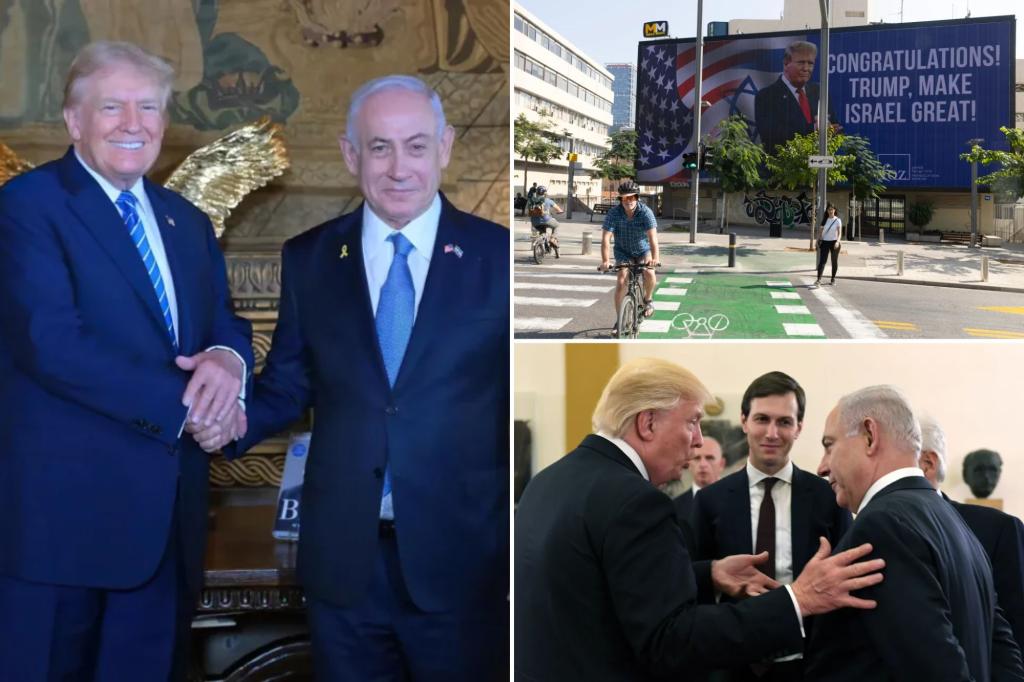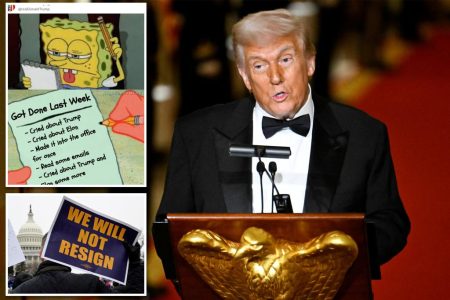Donald Trump, in a recent interview with Time magazine, has expressed his determination to broker a lasting peace agreement between Israel and Hamas, aiming to definitively end the protracted conflict in the Gaza Strip. He emphasizes this as a key objective for his second term, asserting his personal commitment to achieving this goal, even going so far as to express distrust in others’ ability to handle such a sensitive and complex situation, including Israeli Prime Minister Benjamin Netanyahu. This declaration underscores Trump’s self-assured approach to foreign policy and his belief in his unique negotiating prowess.
The former president’s comments regarding the Israeli-Palestinian conflict reveal a seemingly pragmatic, albeit somewhat ambiguous, stance on the path to peace. While acknowledging the traditional two-state solution as a possibility, he refrains from explicitly endorsing it, instead emphasizing the overarching goal of achieving a lasting peace that prevents future tragedies like the Hamas massacre of October 7, 2023. This massacre, which claimed the lives of over a thousand people, appears to have significantly impacted Trump’s perspective on the conflict, highlighting the urgency of finding a resolution, regardless of the specific framework employed. His open-ended approach suggests a willingness to consider various options, potentially deviating from established diplomatic norms.
Trump’s ambiguity extends to the issue of Israeli settlements in the West Bank. While he claims to have previously prevented Netanyahu from annexing more territory, he remains noncommittal about his future course of action, stating that “we’ll see what happens.” This statement, coupled with his frequent references to the October 7 massacre, hints at a potential shift in his policy, perhaps towards greater acceptance of Israeli territorial expansion. This uncertainty is further amplified by the views of his appointed ambassador to Israel, Mike Huckabee, who has openly expressed support for Israeli settlements and even the annexation of the West Bank.
Huckabee’s statements, while acknowledging that he will ultimately implement the president’s policy, nevertheless indicate a predisposition towards a pro-Israel stance. His openness to the idea of Israeli settlements in Gaza, though tentative, further underscores this inclination. This alignment between Trump’s potential shift in policy and his ambassador’s views suggests a possible direction for US policy in the region, one that could potentially depart significantly from previous administrations.
Trump’s confidence in resolving the Israeli-Palestinian conflict stands in contrast to his assessment of the war in Ukraine, which he deems more complicated. He believes the Middle East conflict, while multifaceted, is ultimately “easier to solve,” a perspective that may raise eyebrows given the decades-long, intractable nature of the dispute. This optimistic outlook, coupled with his stated intention to personally oversee the peace process, reinforces his self-assured approach to international relations and his belief in his deal-making abilities. His recent meeting with Netanyahu at Mar-a-Lago further underscores his active engagement in the issue and his commitment to fulfilling his promise of bringing peace to the Middle East.
In essence, Trump’s pronouncements on the Israeli-Palestinian conflict paint a picture of a leader determined to achieve a lasting peace, albeit through a potentially unconventional and as yet undefined approach. His emphasis on the October 7 massacre, his ambiguous stance on the two-state solution, the potential shift in his position on Israeli settlements, and the pro-Israel leanings of his appointed ambassador all point towards a complex and evolving policy landscape. While his confidence in achieving peace is evident, the specifics of his strategy remain unclear, leaving room for speculation and concern about the potential implications of his actions. The coming months will undoubtedly shed more light on Trump’s approach and its impact on this volatile and long-contested region.










